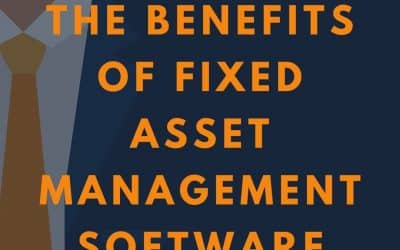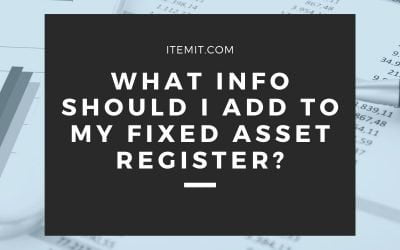Before we go on to discuss the importance of fixed asset tracking, here’s a short overview of what fixed assets are, and what they mean for your business.
A fixed asset is a term used to define objects of value that cannot be readily converted to cash. They are used in the business process to generate revenue and may vary from land to equipment.
Fixed asset tracking involves storing important asset details, such as the purchase date and the valuation of an asset in a single, localised directory. Be it a spreadsheet, a physical register, or an advanced fixed asset tracking software solution, the basic purpose remains the same – tracking asset data.
Below, we’ve listed some of the most important reasons as to why fixed asset tracking is important.
Benefits of Asset Tracking To Your Business
Accessible Asset Information
The day-to-day business operations often involve frequently accessing asset information. Be it for locating your assets or routine asset maintenance scheduling, your assets data is critical in many situations.
As a result, whether your business lies in the IT or the construction sector, knowing where your assets are, and who has them is imperative to accountability.
When asset data is both readily available and easily accessible, your business’s productivity increases.
Improved Customer Service
Though it may not be outwardly apparent, tracking your assets yields serious returns when it comes to customer satisfaction.
For instance, by utilising asset tracking to better analyse customer buying patterns, you can ensure that high-in-demand products are never out of supply. This in turn will improve customers’ satisfaction, and happier customers translate to loyal customers.
Reduced Spending
Of all the listed advantages, being able to save money definitely takes the crown.
Asset tracking reduces losses in many different ways. Be it better planning, or improved resource utilisation, asset tracking has it all.
For instance, asset tracking allows you to track when an asset’s maintenance is required. Timely repairs help increase an asset’s lifespan and prevent the likelihood of equipment breakdown.
Fixed Asset Registers and Their Impact
Due to the immense importance they hold, managing complete, correct, and up-to-date fixed asset records can be quite a daunting task. However, asset tracking software can make all these time-consuming and laborious business functions seem like a cakewalk.
Fixed asset tracking, streamlines these functions, enabling you to log, track and manage your fixed assets in real-time. Furthermore, asset registers provide you with greater insight into how your assets are being used.
Fixed asset tracking via asset registers has far more benefits than those mentioned above. Below are 4 major benefits of using itemit‘s fixed asset register.
- Improving asset-level operations
- Eliminating ghost and zombie assets
- Reducing lost assets and duplicate assets
- Assisting in business decisions
How Does itemit’s Fixed Asset Register Improve Asset Tracking?
Compared to traditional means of tracking assets, itemit’s advanced fixed asset register makes asset tracking a breeze while also providing you with an array of advanced features.
From logging what you own and monitoring how your assets are behaving to viewing your assets’ depreciation, itemit’s asset register comes equipped with all sorts of features.
In addition to all these features, itemit’s asset register allows you to view operating and purchasing costs. What this means is that you’ll be able to create clearer, and more accurate predictions owing to a more transparent view of your annual net and gross profits.
Being able to view what you own is critical, too. Ghost and zombie assets are a pest that plagues many a business. itemit’s fixed asset register makes combating these nuisances simpler. It accomplishes this by giving you an easy-to-comprehend view of the assets that you own. This allows you to improve accountability within your business and can prevent fines that would set you back an arm and a leg!
Compared to your run-of-the-mill asset tracker, itemit’s asset tracking software reduces the likelihood of asset losses and duplicate purchases. As opposed to traditional means of asset tracking, itemit also employs asset tags to facilitate asset tracking.
Fixed asset tags are physical tags that you stick onto your assets. They contain a unique code that links them to their unique digital counterpart. Once tagged, you need simply scan an assets tag to access its unique profile on itemit’s asset register.
Every time an asset is scanned, the time of the scan, who scanned the tag, and the last seen location, all get automatically updated and logged onto itemit’s asset register. This allows you to get a full audit trail and pinpoint when and where issues were reported.
itemit: Revolutionising Fixed Asset Tracking
To sum it up, asset tracking is a fundamental business procedure, one that is essential in nearly every business situation. Whether you’re looking to improve your business decision making or improve customer satisfaction, asset tracking is the way to go.
However, to take full advantage of asset tracking, itemit’s asset register is an indispensable software solution. Not only is itemit scalable, but it also features RFID asset tracking and image recognition via AI. Consequently, itemit should be your go-to asset management software solution.
To find out more about how fixed asset tracking can help you in improving your business, feel free to contact our team at team@itemit.com. We are always happy to assist you with any queries you may have.
You can also choose to test itemit yourself using our free 14-day trial. Fill in the form below and test out the fixed asset tracking features today!
The Importance of Fixed Assets Tracking
Choose a better way to track your assets
Start your free 14-day trial now
Instant access. No credit card details required.
Related articles
The Benefits of Fixed Asset Management Software
Find out how you can save time and money with fixed asset management software. The benefits include more control and transparency over equipment.
The Complete Guide to Creating a Fixed Asset Register
Our easy to follow guide covers everything you need to know about creating a fixed asset register for your business, as well as how to get the most out of it.
What Information Should I Add to my Fixed Asset Register?
Are you creating a fixed asset register? We’ll share the key information you need to add to your asset register to help manage your assets.



